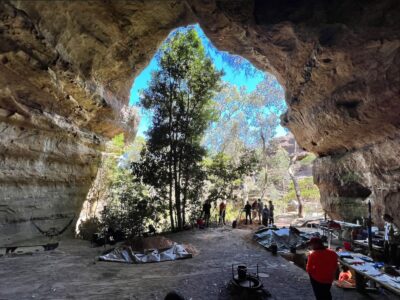A new website dedicated to glacier education has launched. OGGM- Edu, as it’s known, is geared towards educators and instructors. Fabien Maussion, a glaciologist at the University of Innsbruck, was inspired to create the site after working on the Open Global Glacier Model (the “OGGM” of the website’s name), a tool created by the University of Innsbruck and the University of Bremen in Germany. According to Maussion, he “saw the learning potential” of the model, which inspired more than just the website name. OGGM-Edu, which is geared towards instructors and educators, offers a variety of educational tools and materials. These materials include interactive apps, graphics and images, adaptable notebooks, and tutorials on the use of the Open Global Glacier Model.

Although Maussion had the idea for the website, he said that he could not have completed the project without his graduate students, who assisted in building the website via a student employment opportunity. Last week GlacierHub attended a virtual seminar that introduced OGGM-Edu and provided an overview of the website. Maussion and his graduate students Zora Schirmeister and Patrick Schmitt presented each of their contributions to the website.
While introducing OGGM-Edu, Maussion acknowledged other glacier websites, saying he “did not want to recreate the wheel,” but instead “complement existing online resources.” One way he plans on doing this is by building a relationship with the website Antarctic Glaciers, which promotes scientific findings of Antarctic glaciology. A follow-up interview with Maussion revealed he was in touch with Bethan Davies, the main author of Antarctic Glaciers. Maussion hopes to encourage users to bounce back and forth between the two sites. He explained that Antarctic Glaciers provides more textbook-like content, while OGGM-Edu offers learners interactive tools and guides.

One of OGGM-Edu’s main interactive interfaces is a series of apps. The Glacier Gallery can be used as an introduction to the diversity of glacier types. World Glaciers Explorer dives deeper into information on individual glaciers around the world. In this app, users can select for a region of the world, and they will be given information regarding glaciers and the climate within that region. The Glacier Simulator is a modeling device, where users can adjust for factors such as sliding (the movement of a glacier over its bed), slope (steepness), and how many years into the future to model. Finally, the Future Evolution of Glaciers in the Alps allows users to graphically view how glaciers are expected to change in different locations.

Aside from its interactive apps, what makes OGGM-Edu stand out are its interactive notebooks. The notebooks provide details of existing glacier modelling experiments. They are also fully customizable. The notebooks can be downloaded and edited, translated, added to. OGGM-Edu also encourages users to publish their edited notebooks online. Users who share their edited notebooks must credit OGGM-Edu and are asked to make their content freely available.

Maussion described how Lizz Ultee, a glaciologist at MIT, had recently used the notebooks feature for a workshop she taught. Ultee used the OGGM-Edu notebooks as a template, translated them into Spanish and added additional material that was relevant for her workshop. Most of the OGGM-Edu website is available in English, but some content is also available in German and French. Maussion chose to write the website in English as “it’s the language of science.” He added German so that the content was easily available to students at the University of Innsbruck and French because he is fluent in that language.
GlacierHub spoke with Ultee about her experience using the new website. She said, “Fabien set up virtual infrastructure for my participants to run their own simulations without local installation, which was a big help in implementing the workshop.” The website earned rave reviews from attendees of Ultee’s workshop who “said that the format helped them perform and understand programming they didn’t think they could do.”

Maussion underscored the importance of the collaborative element of the OGGM-Edu. The website is available on GitHub with an open license that allows its materials to be reused. OGGM-Edu also encourages user engagement, with opportunities for users to submit ideas for improvements and add content. It does not, however, allow users to indiscriminately edit the site. For that, Maussion and his co-creators review contributions and choose which to include.
Maussion sees OGGM-Edu as a creative learning tool for students from high school on up. He has also used it in presenting his own research and sees workshop and presentation potential in it. Maussion told GlacierHub that the website is meant to be a “good entry point for people who want to learn about glaciers” in a fun and interesting way. From a user perspective, Ultee views the website as “a great tool for education and science outreach.” She is also particularly glad material on OGGM-Edu is available in multiple languages as, “glacier change is happening in many countries where English is not the most commonly spoken language.” Ultee has and will continue to use OGGM-Edu and is “looking forward to seeing how the community uses these tools.”
On behalf of GlacierHub, welcome, OGGM-Edu, to the online glacier community!



